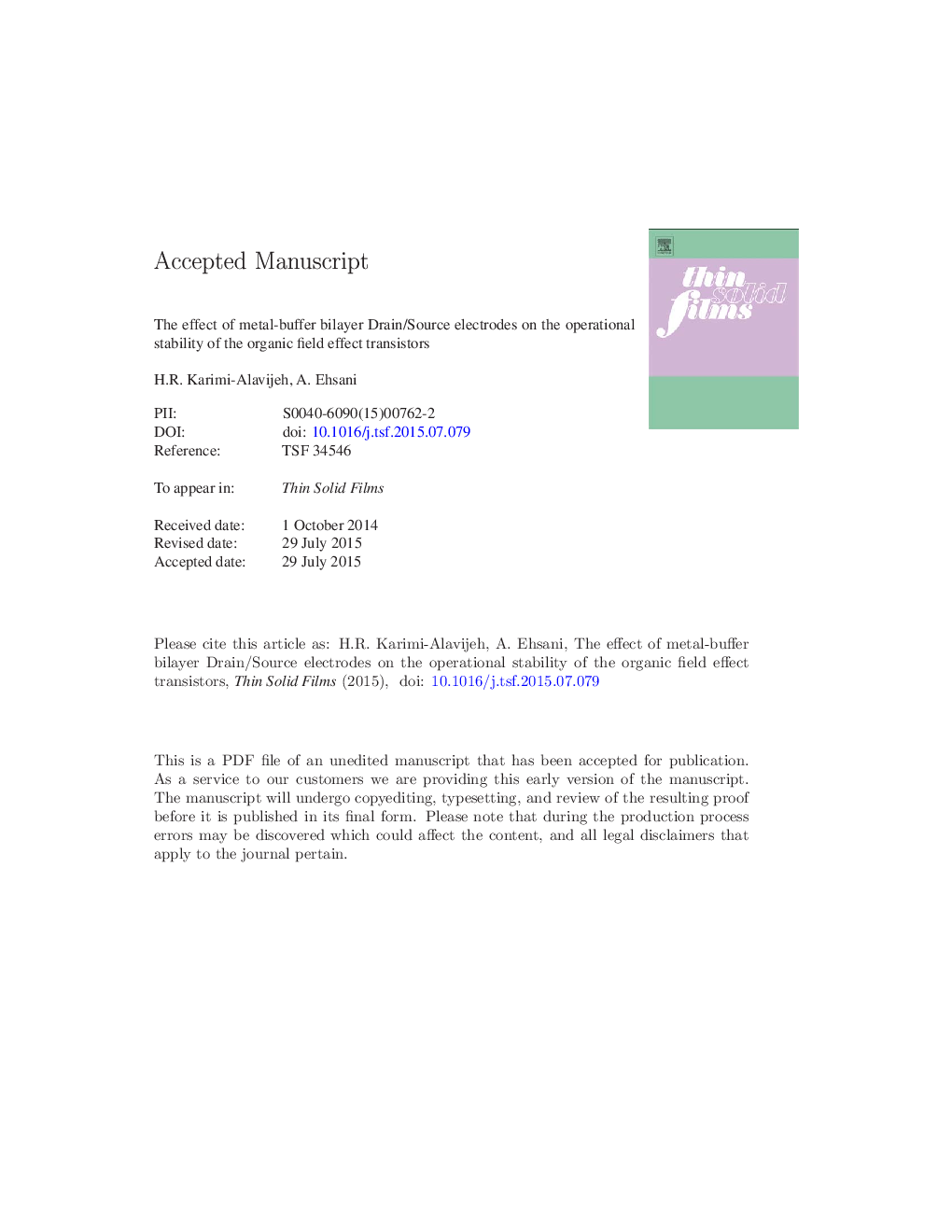| Article ID | Journal | Published Year | Pages | File Type |
|---|---|---|---|---|
| 8033964 | Thin Solid Films | 2015 | 23 Pages |
Abstract
In this paper, we have investigated experimentally the effect of different drain/source (D/S) electrodes and charge injection buffer layers on the electrical properties and operational stability of a stilbene organic field effect transistor (OFET). The results show that the organic buffer layer of copper phthalocyanine (CuPc) considerably improves the electrical properties of the transistors, but has a negligible effect on their temporal behavior. On the other hand, inorganic metal-oxide buffer layer of molybdenum oxide (MoO3) drastically changes both the electrical properties and operational stability. The functionalities of this metal-oxide tightly depend on the properties of the D/S metallic electrodes. OFETs with Al/MoO3 as the bilayer D/S electrodes have the best electrical properties: field effect mobility μeff = 0.32 cm2 Vâ 1 sâ 1 and threshold voltage VTH = â 5 V and the transistors with Ag/MoO3 have the longest operational stability. It was concluded that the chemical stability of the metal/metal-oxide or metal/organic interfaces of the bilayer D/S electrodes determine the operational stability of the OFETs.
Related Topics
Physical Sciences and Engineering
Materials Science
Nanotechnology
Authors
H.R. Karimi-Alavijeh, A. Ehsani,
